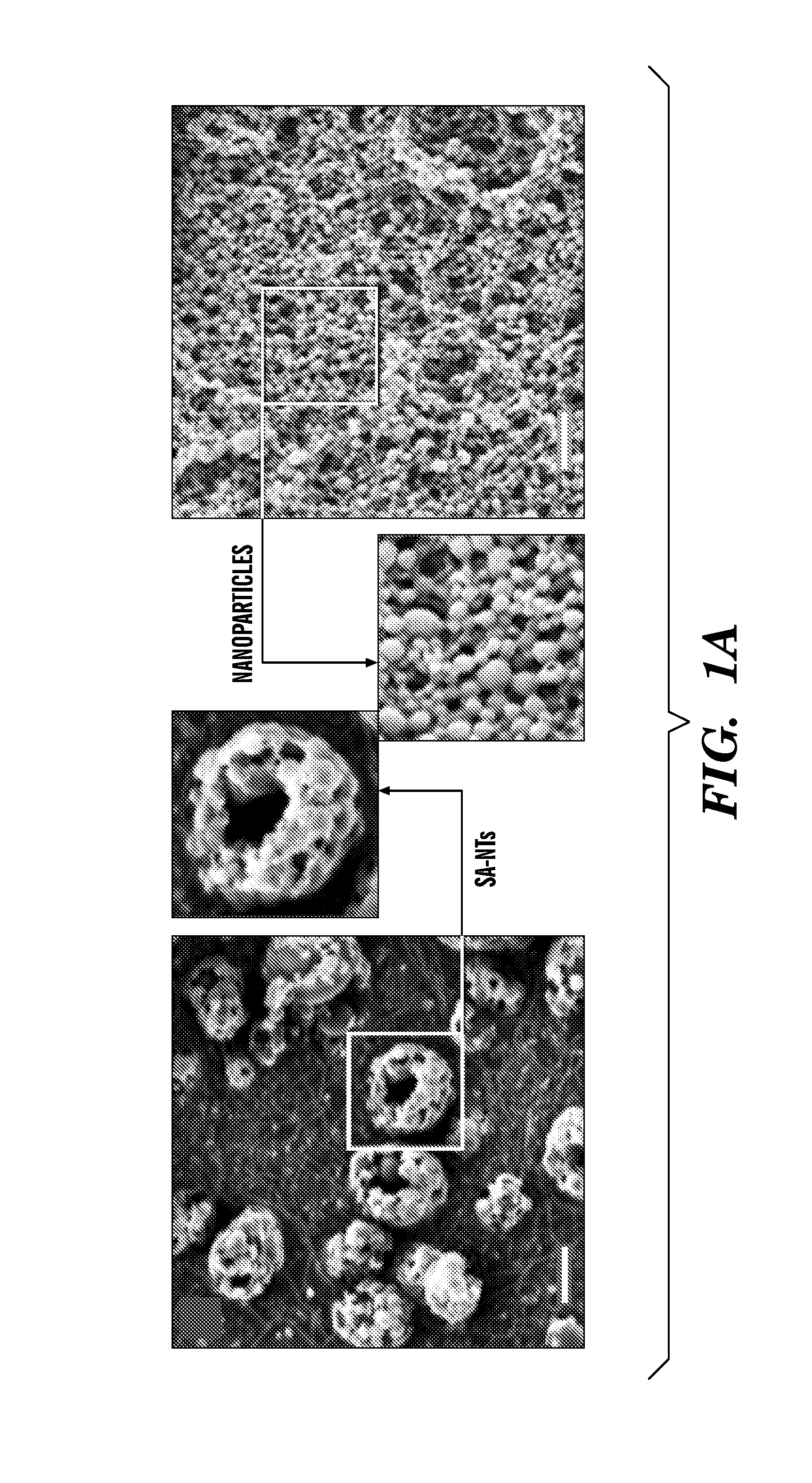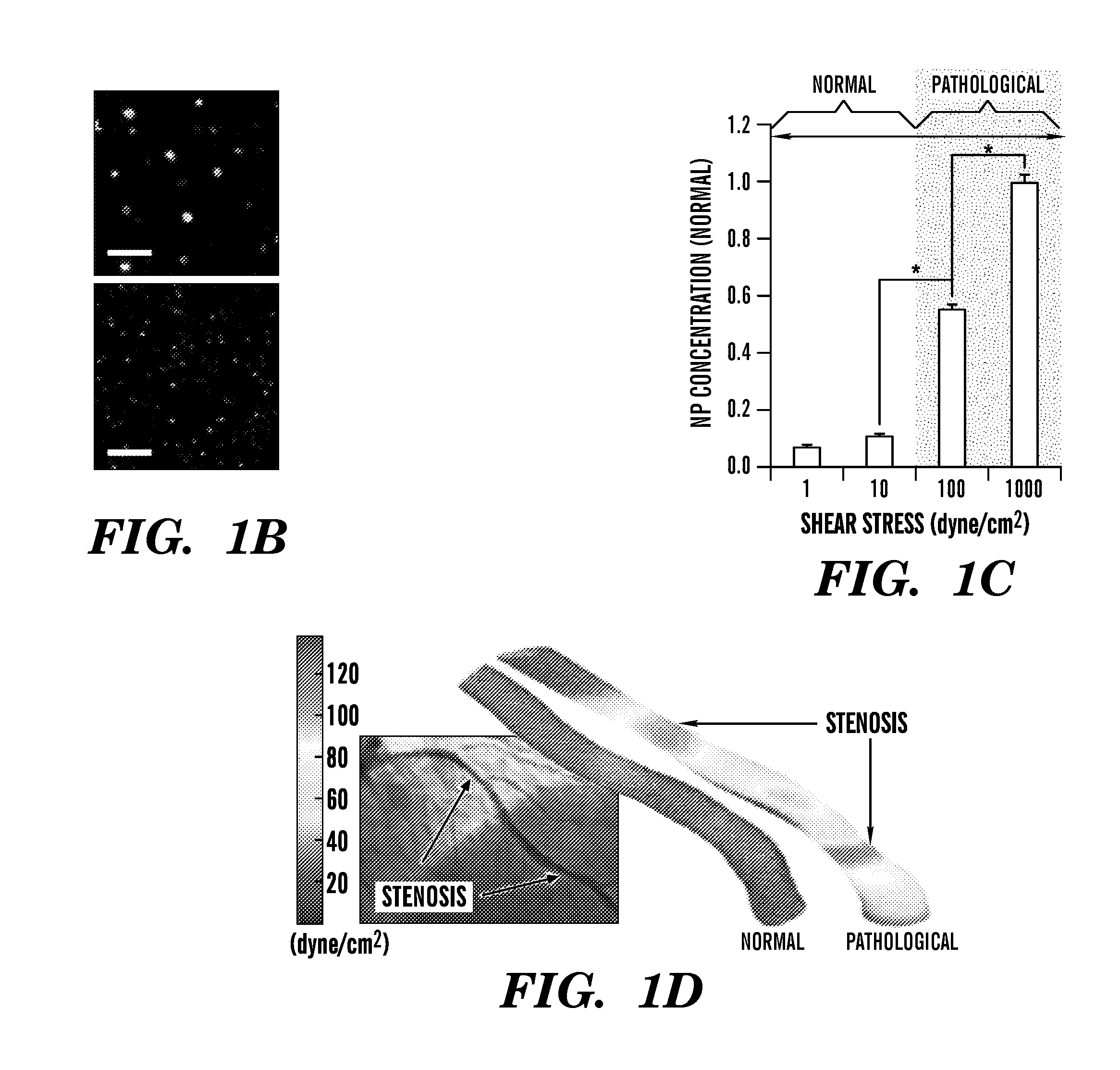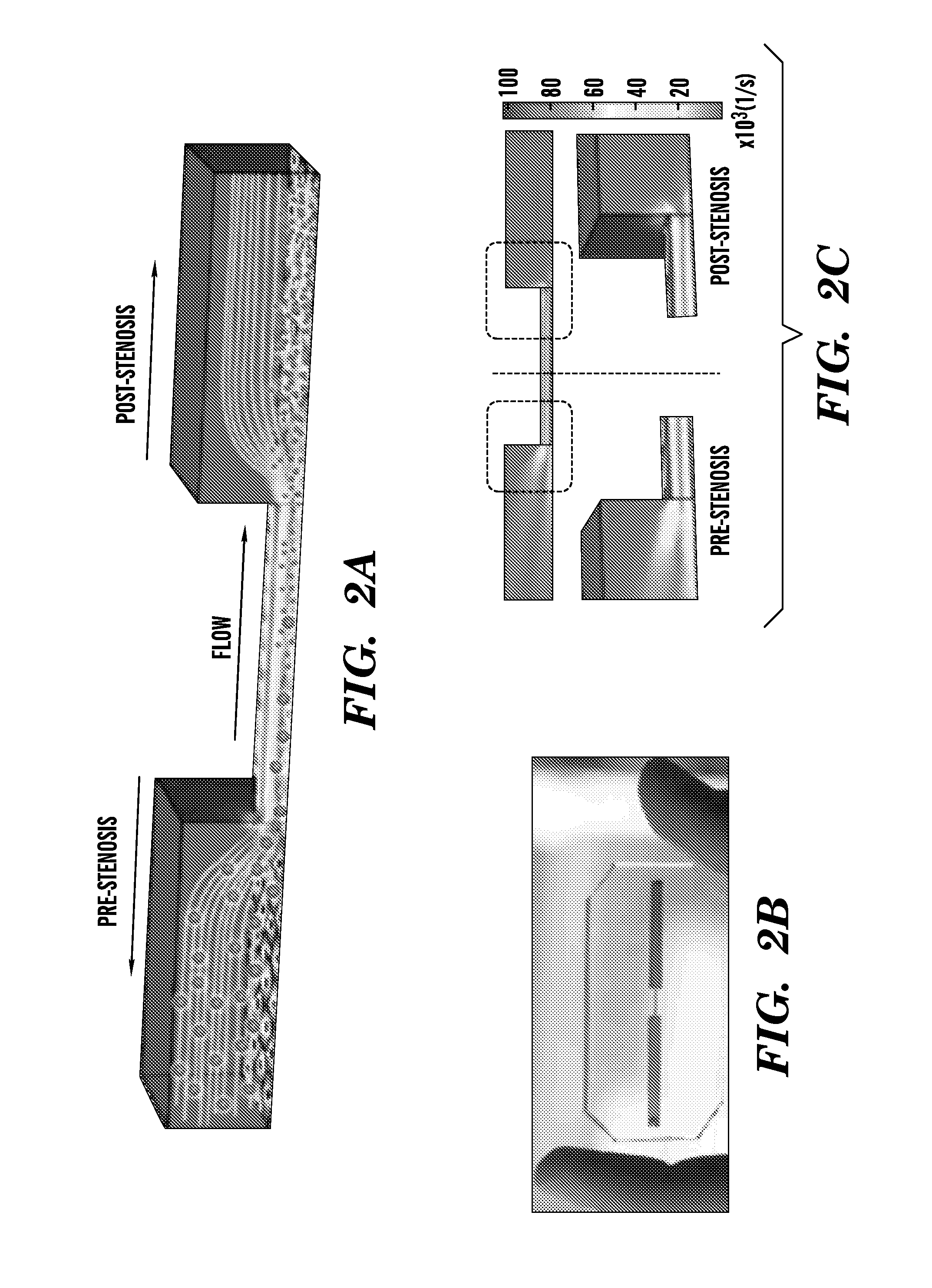Nanotherapeutics for drug targeting
a technology of nano-therapeutics and drug delivery, applied in the direction of drug compositions, cardiovascular disorders, enzymology, etc., can solve the problems of not being able to propose or develop a target drug delivery strategy based on such parameters, and not being able to suggest or develop alternative approaches
- Summary
- Abstract
- Description
- Claims
- Application Information
AI Technical Summary
Benefits of technology
Problems solved by technology
Method used
Image
Examples
example 1
REFERENCES FOR EXAMPLE 1
[0446]1. C. J. L. Murray, A. D. Lopez, The Lancet 349, 1269 (1997).[0447]2. T. J. Ingall et al., Stroke 35, 2418 (2004).[0448]3. T. G. Kwiatkowski et al., New England Journal of Medicine 340, 1781 (1999).[0449]4. L. R. Wechsler, New England Journal of Medicine 364, 2138 (2011).[0450]5. J. Strony, A. Beaudoin, D. Brands, B. Adelman, American Journal of Physiology-Heartand Circulatory Physiology 265, H1787 (1993).[0451]6. D. M. Wootton, D. N. Ku, Annual review of biomedical engineering 1, 299 (1999).[0452]7. J. M. Siegel, C. P. Markou, D. N. Ku, S. Hanson, Journal of biomechanical engineering 116, 446 (1994).[0453]8. D. L. Bark Jr, D. N. Ku, Journal of biomechanics 43, 2970 (2010).[0454]9. Z. M. Ruggeri, J. N. Orje, R. Habermann, A. B. Federici, A. J. Reininger, Blood 108, 1903 (2006).[0455]10. W. S. Nesbitt et al., Nature medicine 15, 665 (2009).[0456]11. S. Goto et al., Circulation 99, 608 (1999).[0457]12. M. Santander-Ortega, A. Jódar-Reyes, N. Csaba, D. Bas...
example 2
Shear Stress Controlled Release from RBCs
[0478]Red blood cells ghosts were prepared using hypotonic hemolysis method. In brief, RBC were centrifuged from blood (2000 g, 10 min) and resuspended in calcium / magnesium free diluted PBS (PBS to DD water vol ratio of 1:10). The cells were allowed to incubate for 15 minutes at 4° C. and then centrifuged (12,000 g, 10 min). This process was repeated four times. Afterwards the cells were loaded with FITC-dextran by incubating the cells with 5 mg / ml dextran in diluted PBS for 1 hour at 4° C. The cells were centrifuges, suspended in PBS buffer with Ca / Mg and allowed to reseal in a 37° C. incubator for more than 2 hr. Following the resealing procedure the cells were washed in PBS for four times to remove any residuals in solution. FIG. 8 shows a fluorescence image of RBC ghosts loaded with FITC-dextran taken five days after preparation of FITC-dextran loaded ghosts.
[0479]A suspension of FITC-dextran loaded RBC ghosts was infused through a device...
example 3
Shear Stress Controlled Release from Microcapsules
[0480]For nanocapsules, Pluronic / poly(ethylenimine) (F127 / PEI) nanocapsules encapsulating rhodadmine dye was prepared by emulsification / solvent evaporation with slight modification from a previously reported method (S. H. Choi, S. H. Lee & T. G., Park, Temperature-sensitive pluronic / poly(ethylenimine) nanocapsules for thermally triggered disruption of intracellular endosomal compartment, Biomacromolecules. 2006 June; 7(6):1864-70). Briefly, Pluronic F127 was activated with p-nitrophenyl chloroformate in tolune for 24 hours at room temperature. The product was precipitated in ether and characterized by 1H NMR. To prepare the nanocapsules, 30% of activated F127 and a small amount of hydrophobic dye (rhodamine) was dissolved in dichloromethane (1 ml) and then added dropwise into a 10 ml aqueous PEI solution (7.5 w / v, pH 9). The mixture was stirred at room temperature for about an hour to obtain nano / micro capsules and to evaporate the e...
PUM
| Property | Measurement | Unit |
|---|---|---|
| Temperature | aaaaa | aaaaa |
| Pressure | aaaaa | aaaaa |
| Surface | aaaaa | aaaaa |
Abstract
Description
Claims
Application Information
 Login to View More
Login to View More - R&D
- Intellectual Property
- Life Sciences
- Materials
- Tech Scout
- Unparalleled Data Quality
- Higher Quality Content
- 60% Fewer Hallucinations
Browse by: Latest US Patents, China's latest patents, Technical Efficacy Thesaurus, Application Domain, Technology Topic, Popular Technical Reports.
© 2025 PatSnap. All rights reserved.Legal|Privacy policy|Modern Slavery Act Transparency Statement|Sitemap|About US| Contact US: help@patsnap.com



